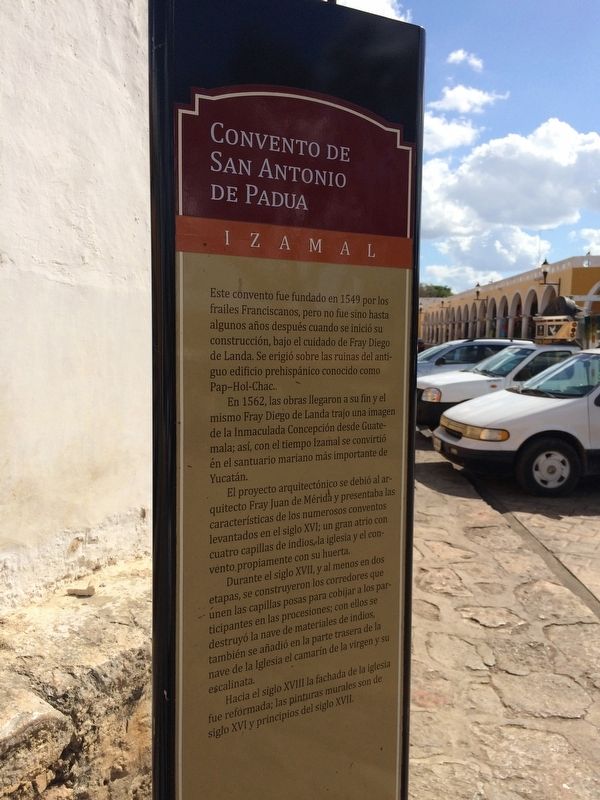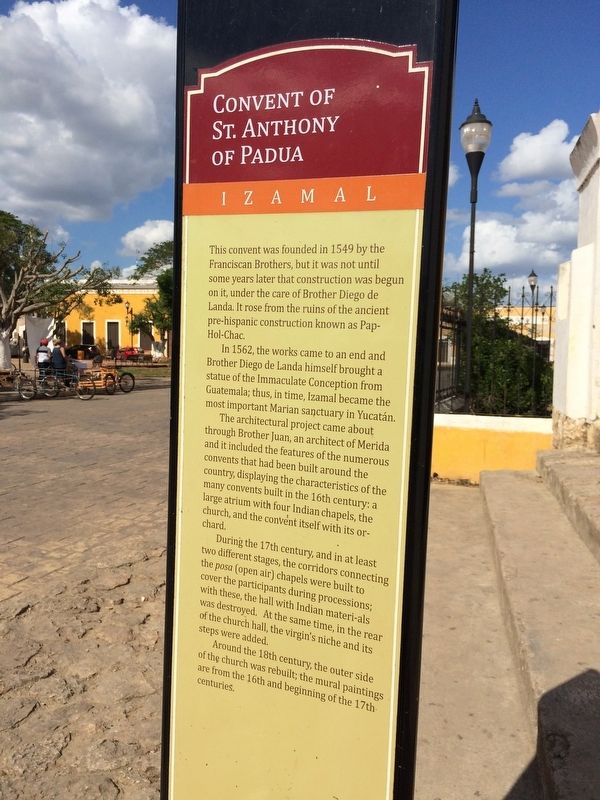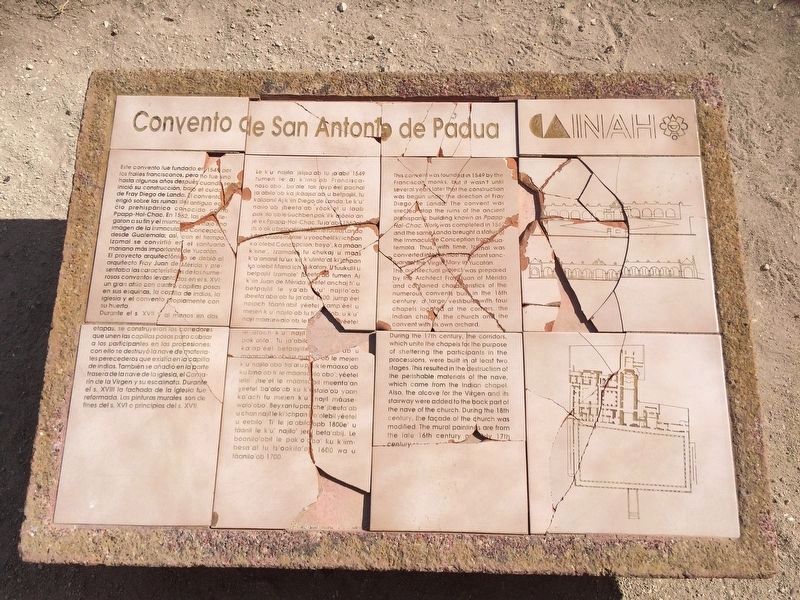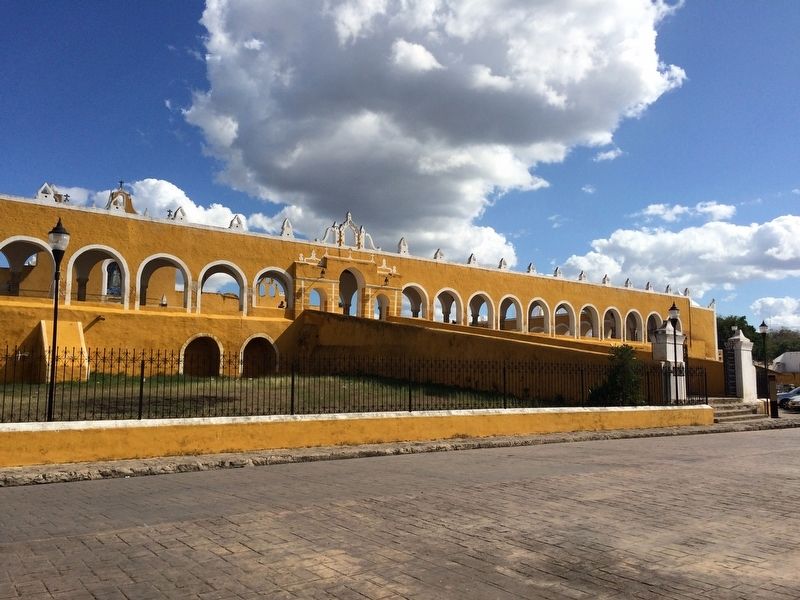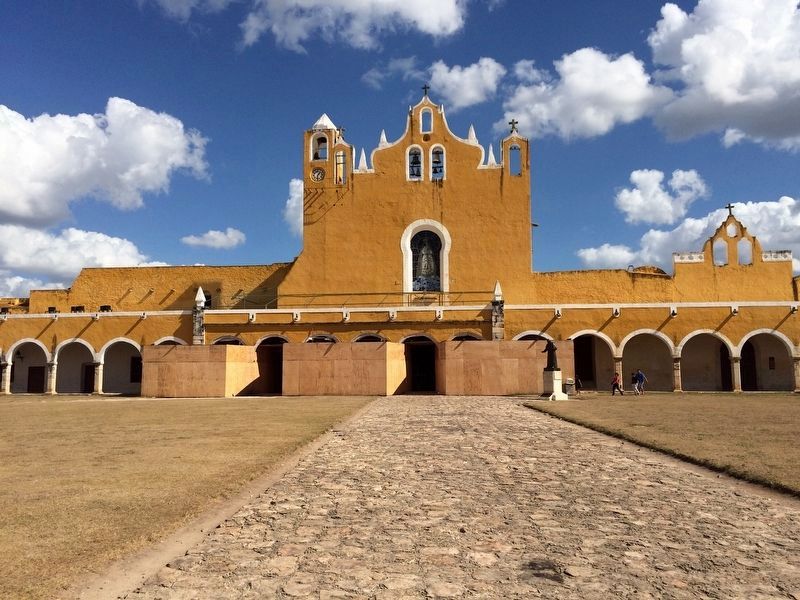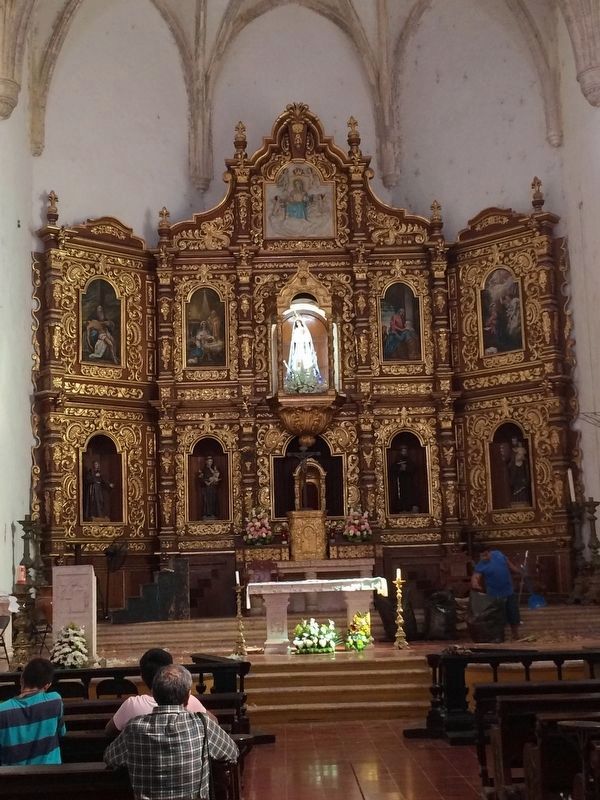Izamal, Yucatán, Mexico — The Southeast (Yucatan Peninsula)
The Convent of St. Anthony of Padua
Convento de San Antonio de Padua
Este convento fue fundado en 1549 por los frailes Franciscanos, pero no fue sino hasta algunos años después cuando se inició su construcción, bajo el cuidado de Fray Diego de Landa. Se erigió sobre las ruinas del antiguo edificio prehispánico conocido como Pap-Hol-Chac.
En 1562, las obras llegaron a su fin y el mismo Fray Diego de Landa trajo una imagen de la Inmaculada Concepción desde Guatemala; así, con el tiempo Izamal se convirtió en el santuario mariano más importante de Yucatán.
El proyecto arquitectónico se debió al arquitecto Fray Juan de Mérida y presentaba las características de los numerosos conventos levantados en el siglo XVI; un gran atrio con cuatro capillas de indios la iglesia y el convento propiamente con su huerta.
Durante el siglo XVII, y al menos en dos etapas, se construyeron los corredores que unen las capillas posas para cobijar a los participantes en las procesiones; con ellos se destruyó la nave de materiales de indios, también se añadió en la parte trasera de la nave de la Iglesia el camarín de la virgen y su escalinata.
Hacia el siglo XVIII la fachada de la iglesia fue reformada; las pinturas murales son de siglo XVI y principios del siglo XVII.
English:
Convent of St. Anthony of Padua
This convent was founded in 1549 by the Franciscan Brothers, but it was not until some years later that construction was begun on it, under the care of Brother Diego de Landa. It rose from the ruins of the ancient pre-hispanic construction known as Pap-Hol-Chac.
In 1562, the works came to an end and Brother Diego de Landa himself brought a statue of the Immaculate Conception from Guatemala; thus, in time, Izamal became the most important Marian sanctuary in Yucatán.
The architectural project came about through Brother Juan, an architect of Merida and it included the features of the numerous convents that had been built around the country, displaying the characteristics of the many convents built in 16th century: a large atrium with four Indian chapels, the church, and the convent itself with its orchard.
During the 17th century, and in at least two different stages, the corridors connecting the posa (open air) chapels were built to cover the participants during processions; with these, the hall with Indian materials was destroyed. At the same time, in the rear of the church hall, the virgin’s niche and its steps were added.
Around the 18th century, the outer side of the church was rebuilt; the mural paintings are from the 16th and beginning of the 17th centuries.
Topics. This historical marker is listed in these topic lists: Architecture • Churches & Religion • Colonial Era • Women. A significant historical year for this entry is 1549.
Location. 20° 55.953′ N, 89° 1.137′ W. Marker is in Izamal, Yucatán. Marker is on Calle 30 just north of Calle 31-A, on the left when traveling south. Touch for map. Marker is in this post office area: Izamal YU 97540, Mexico. Touch for directions.
Other nearby markers. At least 3 other markers are within walking distance of this marker. Monsignor Crescencio Carrillo y Ancona (within shouting distance of this marker); Fray Diego de Landa (about 90 meters away, measured in a direct line); Ricardo López Méndez (about 120 meters away).
Credits. This page was last revised on January 4, 2023. It was originally submitted on March 14, 2017, by J. Makali Bruton of Accra, Ghana. This page has been viewed 249 times since then and 39 times this year. Photos: 1, 2. submitted on March 14, 2017, by J. Makali Bruton of Accra, Ghana. 3. submitted on March 15, 2017, by J. Makali Bruton of Accra, Ghana. 4, 5. submitted on March 14, 2017, by J. Makali Bruton of Accra, Ghana. 6. submitted on March 17, 2017, by J. Makali Bruton of Accra, Ghana.
